-
EXECUTIVE SUMMARY
-
Market Overview
-
Key Findings
-
Market Segmentation
-
Competitive Landscape
-
Challenges and Opportunities
-
Future Outlook
-
\r\n
-
MARKET INTRODUCTION
-
Definition
-
Scope of the study
- Research Objective
- Assumption
- Limitations
-
RESEARCH METHODOLOGY
-
Overview
-
Data Mining
-
Secondary Research
-
Primary Research
- Primary Interviews and Information Gathering Process
- Breakdown of Primary Respondents
-
Forecasting Model
-
Market Size Estimation
- Bottom-Up Approach
- Top-Down Approach
-
Data Triangulation
-
Validation
-
\r\n
-
MARKET DYNAMICS
-
Overview
-
Drivers
-
Restraints
-
Opportunities
-
MARKET FACTOR ANALYSIS
-
Value chain Analysis
-
Porter's Five Forces Analysis
- Bargaining Power of Suppliers
- Bargaining Power of Buyers
- Threat of New Entrants
- Threat of Substitutes
- Intensity of Rivalry
-
COVID-19 Impact Analysis
- Market Impact Analysis
- Regional Impact
- Opportunity and Threat Analysis
-
\r\n
-
LITHIUM HYDROXIDE MARKET, BY APPLICATION (USD BILLION)
-
Batteries
-
Ceramic Glass
-
Lubricant Grease
-
Air conditioning
-
LITHIUM HYDROXIDE MARKET, BY END USE (USD BILLION)
-
Automotive
-
Electrical & Electronics
-
Marine
-
Aerospace
-
LITHIUM HYDROXIDE MARKET, BY REGIONAL (USD BILLION)
-
North America
- US
- Canada
-
Europe
- Germany
- UK
- France
- Russia
- Italy
- Spain
- Rest of Europe
-
APAC
- China
- India
- Japan
- South Korea
- Malaysia
- Thailand
- Indonesia
- Rest of APAC
-
South America
- Brazil
- Mexico
- Argentina
- Rest of South America
-
MEA
- GCC Countries
- South Africa
- Rest of MEA
-
\r\n
-
COMPETITIVE LANDSCAPE
-
Overview
-
Competitive Analysis
-
Market share Analysis
-
Major Growth Strategy in the Lithium Hydroxide Market
-
Competitive Benchmarking
-
Leading Players in Terms of Number of Developments in the Lithium Hydroxide Market
-
Key developments and growth strategies
- New Product Launch/Service Deployment
- Merger & Acquisitions
- Joint Ventures
-
Major Players Financial Matrix
- Sales and Operating Income
- Major Players R&D Expenditure. 2023
-
COMPANY PROFILES
-
Albemarle
- Financial Overview
- Products Offered
- Key Developments
- SWOT Analysis
- Key Strategies
-
Lithium Americas
- Financial Overview
- Products Offered
- Key Developments
- SWOT Analysis
- Key Strategies
-
Infinity Lithium
- Financial Overview
- Products Offered
- Key Developments
- SWOT Analysis
- Key Strategies
-
Tianqi Lithium
- Financial Overview
- Products Offered
- Key Developments
- SWOT Analysis
- Key Strategies
-
Pilbara Minerals
- Financial Overview
- Products Offered
- Key Developments
- SWOT Analysis
- Key Strategies
-
Cypress Development Corporation
- Financial Overview
- Products Offered
- Key Developments
- SWOT Analysis
- Key Strategies
-
Livent
- Financial Overview
- Products Offered
- Key Developments
- SWOT Analysis
- Key Strategies
-
SQM
- Financial Overview
- Products Offered
- Key Developments
- SWOT Analysis
- Key Strategies
-
Galaxy Resources
- Financial Overview
- Products Offered
- Key Developments
- SWOT Analysis
- Key Strategies
-
Koch Industries
- Financial Overview
- Products Offered
- Key Developments
- SWOT Analysis
- Key Strategies
-
American Battery Technology Company
- Financial Overview
- Products Offered
- Key Developments
- SWOT Analysis
- Key Strategies
-
Nemaska Lithium
- Financial Overview
- Products Offered
- Key Developments
- SWOT Analysis
- Key Strategies
-
Orocobre
- Financial Overview
- Products Offered
- Key Developments
- SWOT Analysis
- Key Strategies
-
Ganfeng Lithium
- Financial Overview
- Products Offered
- Key Developments
- SWOT Analysis
- Key Strategies
-
Avalon Advanced Materials
- Financial Overview
- Products Offered
- Key Developments
- SWOT Analysis
- Key Strategies
-
APPENDIX
-
References
-
Related Reports
-
LIST OF TABLES
-
\r\n
-
LIST OF ASSUMPTIONS
-
NORTH AMERICA LITHIUM HYDROXIDE MARKET SIZE ESTIMATES & FORECAST, BY APPLICATION, 2019-2035 (USD BILLIONS)
-
NORTH AMERICA LITHIUM HYDROXIDE MARKET SIZE ESTIMATES & FORECAST, BY END USE, 2019-2035 (USD BILLIONS)
-
NORTH AMERICA LITHIUM HYDROXIDE MARKET SIZE ESTIMATES & FORECAST, BY REGIONAL, 2019-2035 (USD BILLIONS)
-
US LITHIUM HYDROXIDE MARKET SIZE ESTIMATES & FORECAST, BY APPLICATION, 2019-2035 (USD BILLIONS)
-
US LITHIUM HYDROXIDE MARKET SIZE ESTIMATES & FORECAST, BY END USE, 2019-2035 (USD BILLIONS)
-
US LITHIUM HYDROXIDE MARKET SIZE ESTIMATES & FORECAST, BY REGIONAL, 2019-2035 (USD BILLIONS)
-
CANADA LITHIUM HYDROXIDE MARKET SIZE ESTIMATES & FORECAST, BY APPLICATION, 2019-2035 (USD BILLIONS)
-
CANADA LITHIUM HYDROXIDE MARKET SIZE ESTIMATES & FORECAST, BY END USE, 2019-2035 (USD BILLIONS)
-
CANADA LITHIUM HYDROXIDE MARKET SIZE ESTIMATES & FORECAST, BY REGIONAL, 2019-2035 (USD BILLIONS)
-
EUROPE LITHIUM HYDROXIDE MARKET SIZE ESTIMATES & FORECAST, BY APPLICATION, 2019-2035 (USD BILLIONS)
-
EUROPE LITHIUM HYDROXIDE MARKET SIZE ESTIMATES & FORECAST, BY END USE, 2019-2035 (USD BILLIONS)
-
EUROPE LITHIUM HYDROXIDE MARKET SIZE ESTIMATES & FORECAST, BY REGIONAL, 2019-2035 (USD BILLIONS)
-
GERMANY LITHIUM HYDROXIDE MARKET SIZE ESTIMATES & FORECAST, BY APPLICATION, 2019-2035 (USD BILLIONS)
-
GERMANY LITHIUM HYDROXIDE MARKET SIZE ESTIMATES & FORECAST, BY END USE, 2019-2035 (USD BILLIONS)
-
GERMANY LITHIUM HYDROXIDE MARKET SIZE ESTIMATES & FORECAST, BY REGIONAL, 2019-2035 (USD BILLIONS)
-
UK LITHIUM HYDROXIDE MARKET SIZE ESTIMATES & FORECAST, BY APPLICATION, 2019-2035 (USD BILLIONS)
-
UK LITHIUM HYDROXIDE MARKET SIZE ESTIMATES & FORECAST, BY END USE, 2019-2035 (USD BILLIONS)
-
UK LITHIUM HYDROXIDE MARKET SIZE ESTIMATES & FORECAST, BY REGIONAL, 2019-2035 (USD BILLIONS)
-
FRANCE LITHIUM HYDROXIDE MARKET SIZE ESTIMATES & FORECAST, BY APPLICATION, 2019-2035 (USD BILLIONS)
-
FRANCE LITHIUM HYDROXIDE MARKET SIZE ESTIMATES & FORECAST, BY END USE, 2019-2035 (USD BILLIONS)
-
FRANCE LITHIUM HYDROXIDE MARKET SIZE ESTIMATES & FORECAST, BY REGIONAL, 2019-2035 (USD BILLIONS)
-
RUSSIA LITHIUM HYDROXIDE MARKET SIZE ESTIMATES & FORECAST, BY APPLICATION, 2019-2035 (USD BILLIONS)
-
RUSSIA LITHIUM HYDROXIDE MARKET SIZE ESTIMATES & FORECAST, BY END USE, 2019-2035 (USD BILLIONS)
-
RUSSIA LITHIUM HYDROXIDE MARKET SIZE ESTIMATES & FORECAST, BY REGIONAL, 2019-2035 (USD BILLIONS)
-
ITALY LITHIUM HYDROXIDE MARKET SIZE ESTIMATES & FORECAST, BY APPLICATION, 2019-2035 (USD BILLIONS)
-
ITALY LITHIUM HYDROXIDE MARKET SIZE ESTIMATES & FORECAST, BY END USE, 2019-2035 (USD BILLIONS)
-
ITALY LITHIUM HYDROXIDE MARKET SIZE ESTIMATES & FORECAST, BY REGIONAL, 2019-2035 (USD BILLIONS)
-
SPAIN LITHIUM HYDROXIDE MARKET SIZE ESTIMATES & FORECAST, BY APPLICATION, 2019-2035 (USD BILLIONS)
-
SPAIN LITHIUM HYDROXIDE MARKET SIZE ESTIMATES & FORECAST, BY END USE, 2019-2035 (USD BILLIONS)
-
SPAIN LITHIUM HYDROXIDE MARKET SIZE ESTIMATES & FORECAST, BY REGIONAL, 2019-2035 (USD BILLIONS)
-
REST OF EUROPE LITHIUM HYDROXIDE MARKET SIZE ESTIMATES & FORECAST, BY APPLICATION, 2019-2035 (USD BILLIONS)
-
REST OF EUROPE LITHIUM HYDROXIDE MARKET SIZE ESTIMATES & FORECAST, BY END USE, 2019-2035 (USD BILLIONS)
-
REST OF EUROPE LITHIUM HYDROXIDE MARKET SIZE ESTIMATES & FORECAST, BY REGIONAL, 2019-2035 (USD BILLIONS)
-
APAC LITHIUM HYDROXIDE MARKET SIZE ESTIMATES & FORECAST, BY APPLICATION, 2019-2035 (USD BILLIONS)
-
APAC LITHIUM HYDROXIDE MARKET SIZE ESTIMATES & FORECAST, BY END USE, 2019-2035 (USD BILLIONS)
-
APAC LITHIUM HYDROXIDE MARKET SIZE ESTIMATES & FORECAST, BY REGIONAL, 2019-2035 (USD BILLIONS)
-
CHINA LITHIUM HYDROXIDE MARKET SIZE ESTIMATES & FORECAST, BY APPLICATION, 2019-2035 (USD BILLIONS)
-
CHINA LITHIUM HYDROXIDE MARKET SIZE ESTIMATES & FORECAST, BY END USE, 2019-2035 (USD BILLIONS)
-
CHINA LITHIUM HYDROXIDE MARKET SIZE ESTIMATES & FORECAST, BY REGIONAL, 2019-2035 (USD BILLIONS)
-
INDIA LITHIUM HYDROXIDE MARKET SIZE ESTIMATES & FORECAST, BY APPLICATION, 2019-2035 (USD BILLIONS)
-
INDIA LITHIUM HYDROXIDE MARKET SIZE ESTIMATES & FORECAST, BY END USE, 2019-2035 (USD BILLIONS)
-
INDIA LITHIUM HYDROXIDE MARKET SIZE ESTIMATES & FORECAST, BY REGIONAL, 2019-2035 (USD BILLIONS)
-
JAPAN LITHIUM HYDROXIDE MARKET SIZE ESTIMATES & FORECAST, BY APPLICATION, 2019-2035 (USD BILLIONS)
-
JAPAN LITHIUM HYDROXIDE MARKET SIZE ESTIMATES & FORECAST, BY END USE, 2019-2035 (USD BILLIONS)
-
JAPAN LITHIUM HYDROXIDE MARKET SIZE ESTIMATES & FORECAST, BY REGIONAL, 2019-2035 (USD BILLIONS)
-
SOUTH KOREA LITHIUM HYDROXIDE MARKET SIZE ESTIMATES & FORECAST, BY APPLICATION, 2019-2035 (USD BILLIONS)
-
SOUTH KOREA LITHIUM HYDROXIDE MARKET SIZE ESTIMATES & FORECAST, BY END USE, 2019-2035 (USD BILLIONS)
-
SOUTH KOREA LITHIUM HYDROXIDE MARKET SIZE ESTIMATES & FORECAST, BY REGIONAL, 2019-2035 (USD BILLIONS)
-
MALAYSIA LITHIUM HYDROXIDE MARKET SIZE ESTIMATES & FORECAST, BY APPLICATION, 2019-2035 (USD BILLIONS)
-
MALAYSIA LITHIUM HYDROXIDE MARKET SIZE ESTIMATES & FORECAST, BY END USE, 2019-2035 (USD BILLIONS)
-
MALAYSIA LITHIUM HYDROXIDE MARKET SIZE ESTIMATES & FORECAST, BY REGIONAL, 2019-2035 (USD BILLIONS)
-
THAILAND LITHIUM HYDROXIDE MARKET SIZE ESTIMATES & FORECAST, BY APPLICATION, 2019-2035 (USD BILLIONS)
-
THAILAND LITHIUM HYDROXIDE MARKET SIZE ESTIMATES & FORECAST, BY END USE, 2019-2035 (USD BILLIONS)
-
THAILAND LITHIUM HYDROXIDE MARKET SIZE ESTIMATES & FORECAST, BY REGIONAL, 2019-2035 (USD BILLIONS)
-
INDONESIA LITHIUM HYDROXIDE MARKET SIZE ESTIMATES & FORECAST, BY APPLICATION, 2019-2035 (USD BILLIONS)
-
INDONESIA LITHIUM HYDROXIDE MARKET SIZE ESTIMATES & FORECAST, BY END USE, 2019-2035 (USD BILLIONS)
-
INDONESIA LITHIUM HYDROXIDE MARKET SIZE ESTIMATES & FORECAST, BY REGIONAL, 2019-2035 (USD BILLIONS)
-
REST OF APAC LITHIUM HYDROXIDE MARKET SIZE ESTIMATES & FORECAST, BY APPLICATION, 2019-2035 (USD BILLIONS)
-
REST OF APAC LITHIUM HYDROXIDE MARKET SIZE ESTIMATES & FORECAST, BY END USE, 2019-2035 (USD BILLIONS)
-
REST OF APAC LITHIUM HYDROXIDE MARKET SIZE ESTIMATES & FORECAST, BY REGIONAL, 2019-2035 (USD BILLIONS)
-
SOUTH AMERICA LITHIUM HYDROXIDE MARKET SIZE ESTIMATES & FORECAST, BY APPLICATION, 2019-2035 (USD BILLIONS)
-
SOUTH AMERICA LITHIUM HYDROXIDE MARKET SIZE ESTIMATES & FORECAST, BY END USE, 2019-2035 (USD BILLIONS)
-
SOUTH AMERICA LITHIUM HYDROXIDE MARKET SIZE ESTIMATES & FORECAST, BY REGIONAL, 2019-2035 (USD BILLIONS)
-
BRAZIL LITHIUM HYDROXIDE MARKET SIZE ESTIMATES & FORECAST, BY APPLICATION, 2019-2035 (USD BILLIONS)
-
BRAZIL LITHIUM HYDROXIDE MARKET SIZE ESTIMATES & FORECAST, BY END USE, 2019-2035 (USD BILLIONS)
-
BRAZIL LITHIUM HYDROXIDE MARKET SIZE ESTIMATES & FORECAST, BY REGIONAL, 2019-2035 (USD BILLIONS)
-
MEXICO LITHIUM HYDROXIDE MARKET SIZE ESTIMATES & FORECAST, BY APPLICATION, 2019-2035 (USD BILLIONS)
-
MEXICO LITHIUM HYDROXIDE MARKET SIZE ESTIMATES & FORECAST, BY END USE, 2019-2035 (USD BILLIONS)
-
MEXICO LITHIUM HYDROXIDE MARKET SIZE ESTIMATES & FORECAST, BY REGIONAL, 2019-2035 (USD BILLIONS)
-
ARGENTINA LITHIUM HYDROXIDE MARKET SIZE ESTIMATES & FORECAST, BY APPLICATION, 2019-2035 (USD BILLIONS)
-
ARGENTINA LITHIUM HYDROXIDE MARKET SIZE ESTIMATES & FORECAST, BY END USE, 2019-2035 (USD BILLIONS)
-
ARGENTINA LITHIUM HYDROXIDE MARKET SIZE ESTIMATES & FORECAST, BY REGIONAL, 2019-2035 (USD BILLIONS)
-
REST OF SOUTH AMERICA LITHIUM HYDROXIDE MARKET SIZE ESTIMATES & FORECAST, BY APPLICATION, 2019-2035 (USD BILLIONS)
-
REST OF SOUTH AMERICA LITHIUM HYDROXIDE MARKET SIZE ESTIMATES & FORECAST, BY END USE, 2019-2035 (USD BILLIONS)
-
REST OF SOUTH AMERICA LITHIUM HYDROXIDE MARKET SIZE ESTIMATES & FORECAST, BY REGIONAL, 2019-2035 (USD BILLIONS)
-
MEA LITHIUM HYDROXIDE MARKET SIZE ESTIMATES & FORECAST, BY APPLICATION, 2019-2035 (USD BILLIONS)
-
MEA LITHIUM HYDROXIDE MARKET SIZE ESTIMATES & FORECAST, BY END USE, 2019-2035 (USD BILLIONS)
-
MEA LITHIUM HYDROXIDE MARKET SIZE ESTIMATES & FORECAST, BY REGIONAL, 2019-2035 (USD BILLIONS)
-
GCC COUNTRIES LITHIUM HYDROXIDE MARKET SIZE ESTIMATES & FORECAST, BY APPLICATION, 2019-2035 (USD BILLIONS)
-
GCC COUNTRIES LITHIUM HYDROXIDE MARKET SIZE ESTIMATES & FORECAST, BY END USE, 2019-2035 (USD BILLIONS)
-
GCC COUNTRIES LITHIUM HYDROXIDE MARKET SIZE ESTIMATES & FORECAST, BY REGIONAL, 2019-2035 (USD BILLIONS)
-
SOUTH AFRICA LITHIUM HYDROXIDE MARKET SIZE ESTIMATES & FORECAST, BY APPLICATION, 2019-2035 (USD BILLIONS)
-
SOUTH AFRICA LITHIUM HYDROXIDE MARKET SIZE ESTIMATES & FORECAST, BY END USE, 2019-2035 (USD BILLIONS)
-
SOUTH AFRICA LITHIUM HYDROXIDE MARKET SIZE ESTIMATES & FORECAST, BY REGIONAL, 2019-2035 (USD BILLIONS)
-
REST OF MEA LITHIUM HYDROXIDE MARKET SIZE ESTIMATES & FORECAST, BY APPLICATION, 2019-2035 (USD BILLIONS)
-
REST OF MEA LITHIUM HYDROXIDE MARKET SIZE ESTIMATES & FORECAST, BY END USE, 2019-2035 (USD BILLIONS)
-
REST OF MEA LITHIUM HYDROXIDE MARKET SIZE ESTIMATES & FORECAST, BY REGIONAL, 2019-2035 (USD BILLIONS)
-
PRODUCT LAUNCH/PRODUCT DEVELOPMENT/APPROVAL
-
ACQUISITION/PARTNERSHIP
-
\r\n
-
\r\n
-
\r\n
-
\r\n
-
\r\n
-
\r\n
-
\r\n
-
\r\n
-
\r\n
-
\r\n
-
\r\n
-
\r\n
-
\r\n
-
\r\n
-
\r\n
-
LIST OF FIGURES
-
\r\n
-
MARKET SYNOPSIS
-
NORTH AMERICA LITHIUM HYDROXIDE MARKET ANALYSIS
-
US LITHIUM HYDROXIDE MARKET ANALYSIS BY APPLICATION
-
US LITHIUM HYDROXIDE MARKET ANALYSIS BY END USE
-
US LITHIUM HYDROXIDE MARKET ANALYSIS BY REGIONAL
-
CANADA LITHIUM HYDROXIDE MARKET ANALYSIS BY APPLICATION
-
CANADA LITHIUM HYDROXIDE MARKET ANALYSIS BY END USE
-
CANADA LITHIUM HYDROXIDE MARKET ANALYSIS BY REGIONAL
-
EUROPE LITHIUM HYDROXIDE MARKET ANALYSIS
-
GERMANY LITHIUM HYDROXIDE MARKET ANALYSIS BY APPLICATION
-
GERMANY LITHIUM HYDROXIDE MARKET ANALYSIS BY END USE
-
GERMANY LITHIUM HYDROXIDE MARKET ANALYSIS BY REGIONAL
-
UK LITHIUM HYDROXIDE MARKET ANALYSIS BY APPLICATION
-
UK LITHIUM HYDROXIDE MARKET ANALYSIS BY END USE
-
UK LITHIUM HYDROXIDE MARKET ANALYSIS BY REGIONAL
-
FRANCE LITHIUM HYDROXIDE MARKET ANALYSIS BY APPLICATION
-
FRANCE LITHIUM HYDROXIDE MARKET ANALYSIS BY END USE
-
FRANCE LITHIUM HYDROXIDE MARKET ANALYSIS BY REGIONAL
-
RUSSIA LITHIUM HYDROXIDE MARKET ANALYSIS BY APPLICATION
-
RUSSIA LITHIUM HYDROXIDE MARKET ANALYSIS BY END USE
-
RUSSIA LITHIUM HYDROXIDE MARKET ANALYSIS BY REGIONAL
-
ITALY LITHIUM HYDROXIDE MARKET ANALYSIS BY APPLICATION
-
ITALY LITHIUM HYDROXIDE MARKET ANALYSIS BY END USE
-
ITALY LITHIUM HYDROXIDE MARKET ANALYSIS BY REGIONAL
-
SPAIN LITHIUM HYDROXIDE MARKET ANALYSIS BY APPLICATION
-
SPAIN LITHIUM HYDROXIDE MARKET ANALYSIS BY END USE
-
SPAIN LITHIUM HYDROXIDE MARKET ANALYSIS BY REGIONAL
-
REST OF EUROPE LITHIUM HYDROXIDE MARKET ANALYSIS BY APPLICATION
-
REST OF EUROPE LITHIUM HYDROXIDE MARKET ANALYSIS BY END USE
-
REST OF EUROPE LITHIUM HYDROXIDE MARKET ANALYSIS BY REGIONAL
-
APAC LITHIUM HYDROXIDE MARKET ANALYSIS
-
CHINA LITHIUM HYDROXIDE MARKET ANALYSIS BY APPLICATION
-
CHINA LITHIUM HYDROXIDE MARKET ANALYSIS BY END USE
-
CHINA LITHIUM HYDROXIDE MARKET ANALYSIS BY REGIONAL
-
INDIA LITHIUM HYDROXIDE MARKET ANALYSIS BY APPLICATION
-
INDIA LITHIUM HYDROXIDE MARKET ANALYSIS BY END USE
-
INDIA LITHIUM HYDROXIDE MARKET ANALYSIS BY REGIONAL
-
JAPAN LITHIUM HYDROXIDE MARKET ANALYSIS BY APPLICATION
-
JAPAN LITHIUM HYDROXIDE MARKET ANALYSIS BY END USE
-
JAPAN LITHIUM HYDROXIDE MARKET ANALYSIS BY REGIONAL
-
SOUTH KOREA LITHIUM HYDROXIDE MARKET ANALYSIS BY APPLICATION
-
SOUTH KOREA LITHIUM HYDROXIDE MARKET ANALYSIS BY END USE
-
SOUTH KOREA LITHIUM HYDROXIDE MARKET ANALYSIS BY REGIONAL
-
MALAYSIA LITHIUM HYDROXIDE MARKET ANALYSIS BY APPLICATION
-
MALAYSIA LITHIUM HYDROXIDE MARKET ANALYSIS BY END USE
-
MALAYSIA LITHIUM HYDROXIDE MARKET ANALYSIS BY REGIONAL
-
THAILAND LITHIUM HYDROXIDE MARKET ANALYSIS BY APPLICATION
-
THAILAND LITHIUM HYDROXIDE MARKET ANALYSIS BY END USE
-
THAILAND LITHIUM HYDROXIDE MARKET ANALYSIS BY REGIONAL
-
INDONESIA LITHIUM HYDROXIDE MARKET ANALYSIS BY APPLICATION
-
INDONESIA LITHIUM HYDROXIDE MARKET ANALYSIS BY END USE
-
INDONESIA LITHIUM HYDROXIDE MARKET ANALYSIS BY REGIONAL
-
REST OF APAC LITHIUM HYDROXIDE MARKET ANALYSIS BY APPLICATION
-
REST OF APAC LITHIUM HYDROXIDE MARKET ANALYSIS BY END USE
-
REST OF APAC LITHIUM HYDROXIDE MARKET ANALYSIS BY REGIONAL
-
SOUTH AMERICA LITHIUM HYDROXIDE MARKET ANALYSIS
-
BRAZIL LITHIUM HYDROXIDE MARKET ANALYSIS BY APPLICATION
-
BRAZIL LITHIUM HYDROXIDE MARKET ANALYSIS BY END USE
-
BRAZIL LITHIUM HYDROXIDE MARKET ANALYSIS BY REGIONAL
-
MEXICO LITHIUM HYDROXIDE MARKET ANALYSIS BY APPLICATION
-
MEXICO LITHIUM HYDROXIDE MARKET ANALYSIS BY END USE
-
MEXICO LITHIUM HYDROXIDE MARKET ANALYSIS BY REGIONAL
-
ARGENTINA LITHIUM HYDROXIDE MARKET ANALYSIS BY APPLICATION
-
ARGENTINA LITHIUM HYDROXIDE MARKET ANALYSIS BY END USE
-
ARGENTINA LITHIUM HYDROXIDE MARKET ANALYSIS BY REGIONAL
-
REST OF SOUTH AMERICA LITHIUM HYDROXIDE MARKET ANALYSIS BY APPLICATION
-
REST OF SOUTH AMERICA LITHIUM HYDROXIDE MARKET ANALYSIS BY END USE
-
REST OF SOUTH AMERICA LITHIUM HYDROXIDE MARKET ANALYSIS BY REGIONAL
-
MEA LITHIUM HYDROXIDE MARKET ANALYSIS
-
GCC COUNTRIES LITHIUM HYDROXIDE MARKET ANALYSIS BY APPLICATION
-
GCC COUNTRIES LITHIUM HYDROXIDE MARKET ANALYSIS BY END USE
-
GCC COUNTRIES LITHIUM HYDROXIDE MARKET ANALYSIS BY REGIONAL
-
SOUTH AFRICA LITHIUM HYDROXIDE MARKET ANALYSIS BY APPLICATION
-
SOUTH AFRICA LITHIUM HYDROXIDE MARKET ANALYSIS BY END USE
-
SOUTH AFRICA LITHIUM HYDROXIDE MARKET ANALYSIS BY REGIONAL
-
REST OF MEA LITHIUM HYDROXIDE MARKET ANALYSIS BY APPLICATION
-
REST OF MEA LITHIUM HYDROXIDE MARKET ANALYSIS BY END USE
-
REST OF MEA LITHIUM HYDROXIDE MARKET ANALYSIS BY REGIONAL
-
KEY BUYING CRITERIA OF LITHIUM HYDROXIDE MARKET
-
RESEARCH PROCESS OF MRFR
-
DRO ANALYSIS OF LITHIUM HYDROXIDE MARKET
-
DRIVERS IMPACT ANALYSIS: LITHIUM HYDROXIDE MARKET
-
RESTRAINTS IMPACT ANALYSIS: LITHIUM HYDROXIDE MARKET
-
SUPPLY / VALUE CHAIN: LITHIUM HYDROXIDE MARKET
-
LITHIUM HYDROXIDE MARKET, BY APPLICATION, 2025 (% SHARE)
-
LITHIUM HYDROXIDE MARKET, BY APPLICATION, 2019 TO 2035 (USD Billions)
-
LITHIUM HYDROXIDE MARKET, BY END USE, 2025 (% SHARE)
-
LITHIUM HYDROXIDE MARKET, BY END USE, 2019 TO 2035 (USD Billions)
-
LITHIUM HYDROXIDE MARKET, BY REGIONAL, 2025 (% SHARE)
-
LITHIUM HYDROXIDE MARKET, BY REGIONAL, 2019 TO 2035 (USD Billions)
-
BENCHMARKING OF MAJOR COMPETITORS
-
\r\n

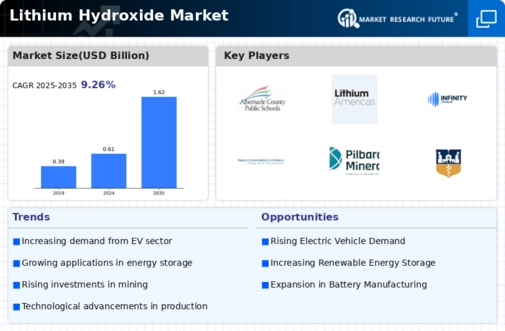

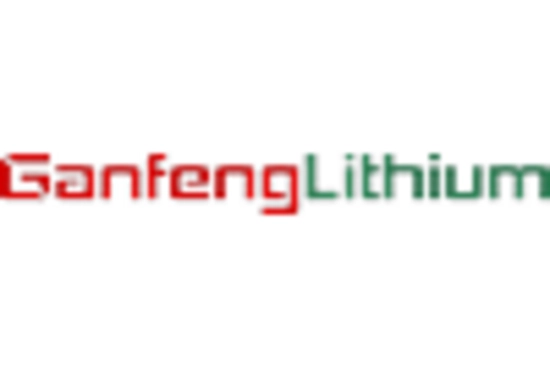
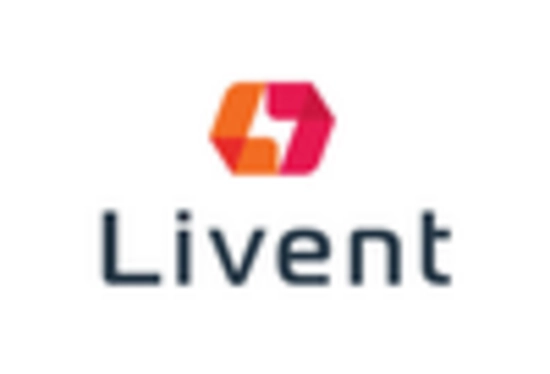
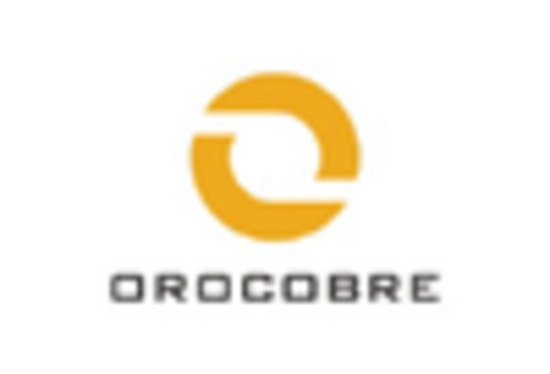

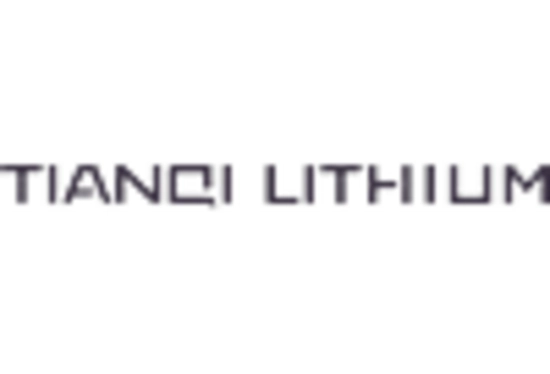

Leave a Comment